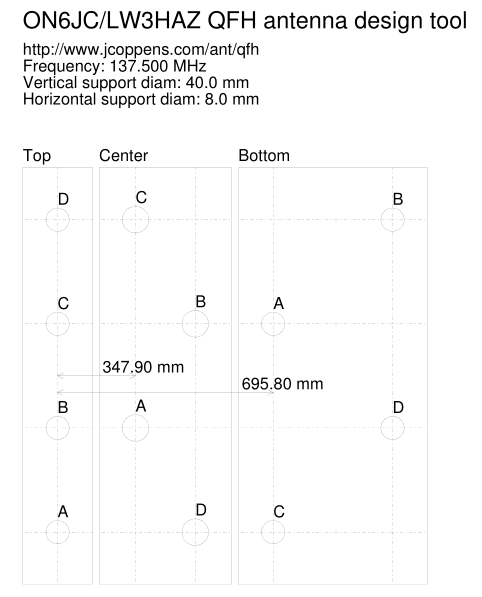During my adventures with SDR (software-defined radio), the need for a proper QFH antenna arose. This type of antenna is used to receive signals that are circularly polarized, such as APT weather maps sent by the NOAA satellites.
I used a PVC pipe and a standard shielded coax cable from the local hardware store, and a copper tube meant for heat transfer in fridges: https://www.amazon.de/gp/product/B007RMXXWG (~20€).
Calculations
I built this antenna for signals in the 137.5 MHz range, because the three NOAA satellites that are still active are sending on 137.620 MHz (NOAA-15), 137.9125 MHz (NOAA-18), and 137.100 MHz (NOAA-19).
I used a free online tool to calculate all the relevant lengths and sizes: http://jcoppens.com/ant/qfh/calc.en.php.


The Build
Building the antenna was relatively straight forward, just bend the copper without any hard kinks and insert the two loops into the PVC pipe according to the generated blueprint.

Wiring the coax cable to the antenna was a challenge. The cable leads had to be soldered to the thick copper pipe, which is an excellent thermal conductor. This property makes soldering really hard. In the end, I flattened the pipes at the end, drilled through them and screwed them together with the cable leads. To be extra sure I dipped the whole thing in flux and then blasted it with a torch until the solder made a good connection.
If you choose to solder inside the PVC pipe, make sure to wear proper protection as the PVC decomposes into chlorine gas when exposed to high heat.
The coax cable was then wrapped a few times around the pipe to create a rudimentary balun.
Conclusion and Testing
The antenna works great. I got clear images from the NOAA satellites, and could even receive signals from several others. Stay tuned for detailed descriptions of those transmissions!